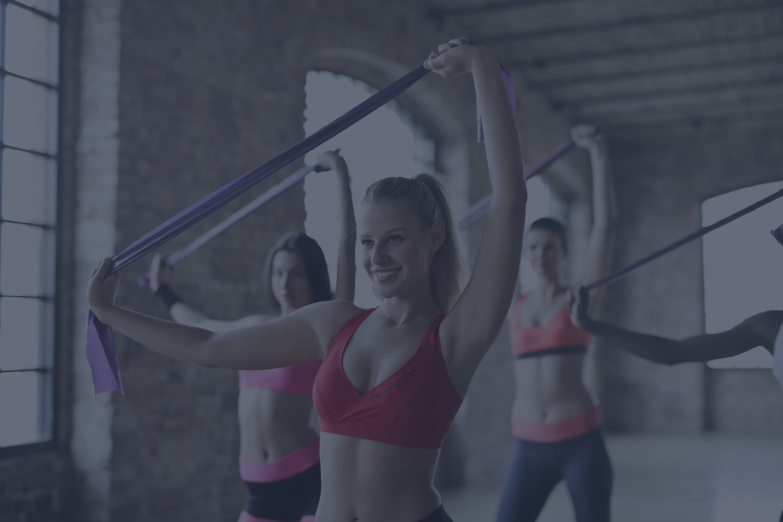
One of the exercises which many first time gym goers have nightmares about is the pull up. Without excellent natural upper body strength, most people struggle to complete a pull up for the first time. So how can you train your body to be able to complete a single set, let alone several sets? The answer is by using a pull up band, or resistance band, to help you out as you develop your form and your overall strength.
How to do banded pull ups
To correctly execute a band assisted pull up you'll first need a long resistance band. You're going to want one which is longer than your height when stretched out - otherwise, you'll be starting off with your head over the bar, which kind of misses the point of the exercise! You should also match the resistance of the band to your body weight, which might take a little experimentation. If it's not resistant enough, it won't give you the support you need.
If it's too high a resistance, it's either not going to stretch down enough under your weight, or it will give you too much of a boost upwards, so you won't be working those back, shoulder, arm and core muscles properly, and you won't progress.
You'll also need a pull up bar, which is high enough that you can hang below it with your legs straight and your feet clear of the floor. This is important, as unlike a classic pull up, where you can bend your knees if the bar is too low and still fully extend your arms during the exercise, with a banded pull up, you need to keep your legs straight.
Do bands help with pull ups?
Yes - they do. There's a reason that lots of people use resistance bands, especially when first learning how to do a pull up. Pull ups are one of the most physically challenging bodyweight exercises you can do - even some men and women who are in great shape struggle to complete more than a few reps. So, working out how to train to do a pull up requires a bit more thought than some other exercises.
Take sit ups as an example. Most people can do one or two, whatever shape they're in. Great - start with one or two and gradually increase your reps over time. But most people can't do a single pull up straightaway. So there's nothing to build on. Resistance band pull ups allow you to develop technique and form while building the muscle strength to tackle the unassisted version.
What muscles work while doing banded pull ups?
Assisted pull ups basically work the same muscles as the regular kind. The only difference is that you're using the band to provide a little extra support, reducing the overall load on your muscles as you train. What the resistance band is basically doing is effectively reducing your body weight.
Different bands will make more or less difference in this respect, so as you become more comfortable doing pull ups you can switch to a band with lower resistance to increase the challenge. Eventually you will be able to complete several sets of pull ups while using no band at all.
The core muscle groups which are targeted by banded pull ups are the back, core, shoulders and arms, including specifically the lats, biceps and forearms, traps, pecs, erector spinae and external oblique.
Benefits of banded pull ups
As we mentioned above, when you're using resistance bands, pull ups are easier - in the sense that your muscles aren't forced to work as hard. While some people think this is just "cheating", that's a misguided notion. The main benefit of using a resistance band isn't to make the workout easier, it's to allow you the space to concentrate on other elements of the exercise.
This is where the banded pull up is useful. It supports part of your weight while you learn the correct technique, hand placement and grip, and allows you to build strength gradually by stepping down the resistance of your band until you're ready to go it alone.
That added support is especially crucial for beginners, as it allows them to build confidence, to get a decent number of reps in per set, but most importantly to avoid the risk of injury to their muscles, tendons and joints by overexerting themselves before they are physically ready.
Getting set up is fairly simple. Loop one end of your band around the pull up bar, in the center, and pass it back through itself, so you can knot it to the bar tightly. You should now have a long loop of resistance band hanging towards the floor, but not touching it. Now, step into that loop with both feet, and take hold of the bar in whichever grip you're intending to train. Complete your pull up, keeping your legs straight. You should feel the band giving you a "boost" as you pull yourself up and get your chin over the bar.
If you're still having trouble reaching the bar, you may need a band with stronger resistance. Or, if you're finding it too easy to get your chin over, and you're not really feeling the burn, you may want to switch down to a lower resistance band.









Leave a comment (all fields required)